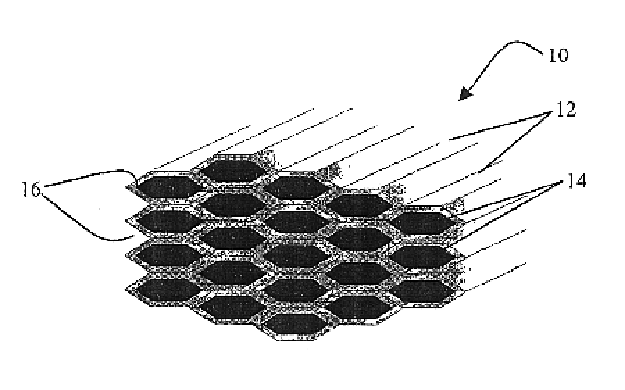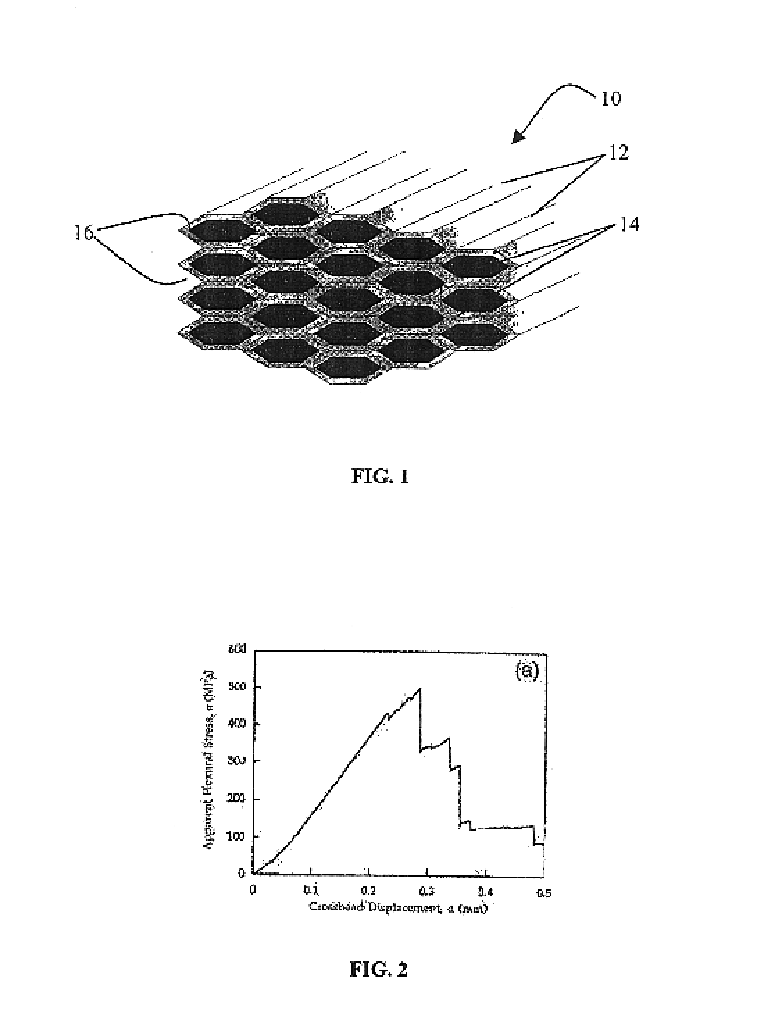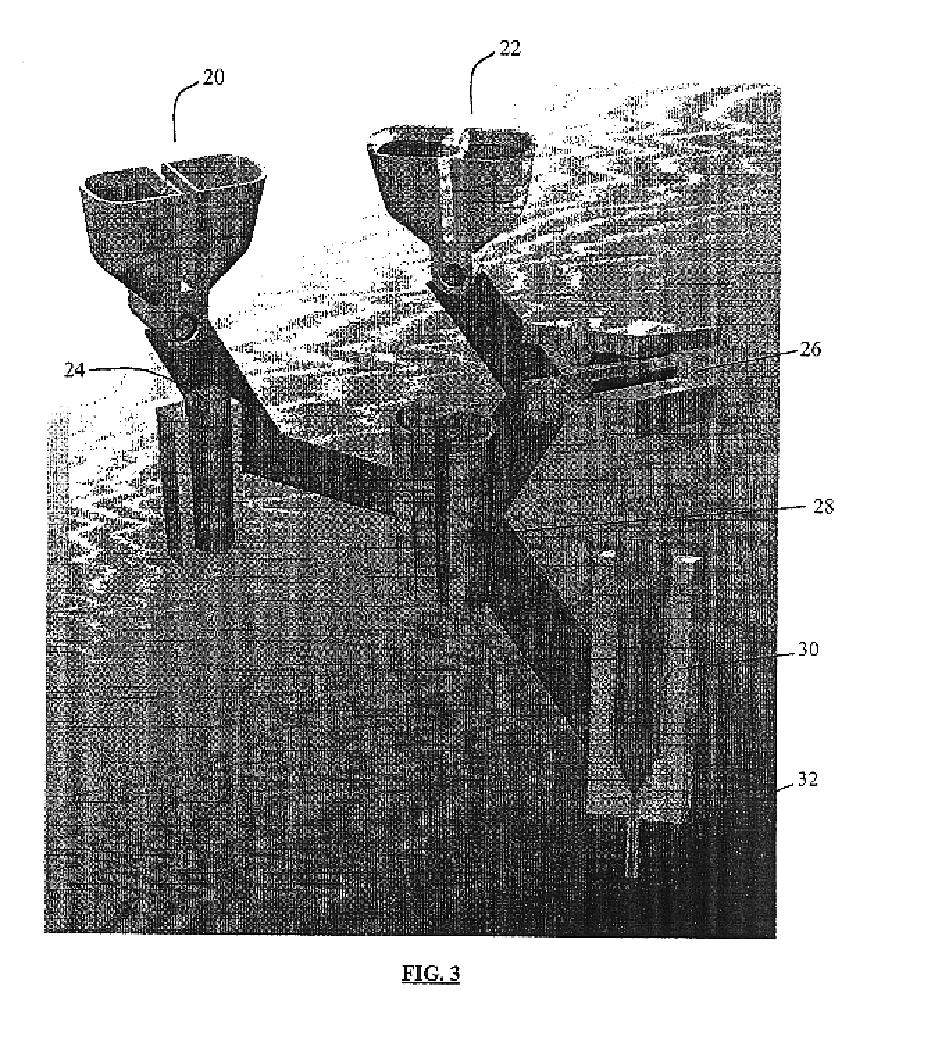Composite components for use in high temperature applications
a composite material and high temperature technology, applied in the direction of x-ray tube laminated targets, x-ray tube target materials, x-ray tubes, etc., can solve the problems of increasing complexity, limited use of monolithic materials, and inability of braze compositions to withstand the temperature profiles experienced during operation
- Summary
- Abstract
- Description
- Claims
- Application Information
AI Technical Summary
Benefits of technology
Problems solved by technology
Method used
Image
Examples
example 1
A HfC / W—Re composite for a solar thermal propulsion engine application was fabricated using FM technology. As mentioned above, monolithic HfC has a good oxidation resistance at elevated temperature and exhibits a high melting temperature. However, the use of HfC is limited by its poor thermal shock resistance. With an addition of ductile metal with high melting temperature, W—Re, the thermal shock resistance of this composite was improved dramatically. Table 2 provides coextrudable formulations of HfC / thermoplastic and W—Re / thermoplastic for the fabrication of HfC / WRe FM composite components. FIG. 5 shows a ‘green’ nozzle assembly in which HfC / W—Re fibers are in the process of being wound onto a graphite mandrel prior to hot pressing.
TABLE 2MaterialDensity (g / cc)Volume %Mass (g)HfC12.6754.00287.36EEA10.9318.007.11EVA20.9418.007.03Heavy Mineral Oil0.8810.004.44
TABLE 3MaterialDensity (g / cc)Volume %Mass (g)W-3.6%Re-0.26%HfC19.3349.00404.31EEA0.9340.0018.75MPEG 5501.1010.24.73
example 2
Tantulum-based FM composites for high temperature propulsion applications were prepared. The FM composites included propulsion nozzles and thrusters, and hot gas valves for use in rocket engines. Tables 4 and 5 present co-extrudeable formulations for the production of TaC—HfC / BN fibrous monolith composite filament.
TABLE 4MaterialDensity (g / cc)Volume %Mass (g)TaC20%HfC13.6354.00309.13EEA0.9318.007.11EVA0.9418.007.03Heavy Mineral Oil0.8810.004.44
TABLE 5MaterialDensity (g / cc)Volume %Mass (g)BN2.2954.0051.94EEA0.9346.0017.97MPEG 5501.10minimalMinimal1 Ethylene Ethyl Acrylate, Union Carbide 2 Ethylene Vinyl Acetate, DuPont
example 3
Various HfC-based FM composite systems were prepared. Mechanical properties of the HfC-based composites are presented in Table 6.
TABLE 6TheoreticalMeasuredFractureFMEMODEMODStressSystemArchitecture(GPa)(GPa)(MPa)HfC / BN / Honeycomb313.02336.0 ± 10.6 183.3 ± 16.3 HFC(82.5 / 17.5) / 17.5HfC / G / Honeycomb302.48324.8 ± 10.9 220.5 ± 18.9 HfC(82.5 / 17.5) / 17.5HfC / Bi-layer459.2453.1 ± 7.8 325.2 ± 80.8 W3.6Re82.5 / 17.5HfC / Bi-layer463.4461.2 ± 17.1 362.5 ± 74.9 W3.6Re90 / 10HfC / Bi-layer382.5 293 ± 11.2197.1 ± 10.8 W3.6Re50 / 50
The HfC FM composite systems were heated to temperatures of 2000° C. (3632° F.) with 34.5 MPa (5 ksi) of pressure for soak times of 1 hour in order to densify the FM composites. Under these conditions, HfC combined with the cell boundary materials (hBN, graphite and W3.6Re) to roughly 90% of full theoretical density. Table 7 summarizes these results.
TABLE 7TheoreticalMeasured% FullDensityDensityTheoreticalHfC SystemArchitecture(g / cc)(g / cc)DensityHfC / BN / HFCHoneycomb11.1710.6995.70(82.5...
PUM
| Property | Measurement | Unit |
|---|---|---|
| operating temperature | aaaaa | aaaaa |
| operating temperature | aaaaa | aaaaa |
| operating temperature | aaaaa | aaaaa |
Abstract
Description
Claims
Application Information
 Login to View More
Login to View More - R&D
- Intellectual Property
- Life Sciences
- Materials
- Tech Scout
- Unparalleled Data Quality
- Higher Quality Content
- 60% Fewer Hallucinations
Browse by: Latest US Patents, China's latest patents, Technical Efficacy Thesaurus, Application Domain, Technology Topic, Popular Technical Reports.
© 2025 PatSnap. All rights reserved.Legal|Privacy policy|Modern Slavery Act Transparency Statement|Sitemap|About US| Contact US: help@patsnap.com



